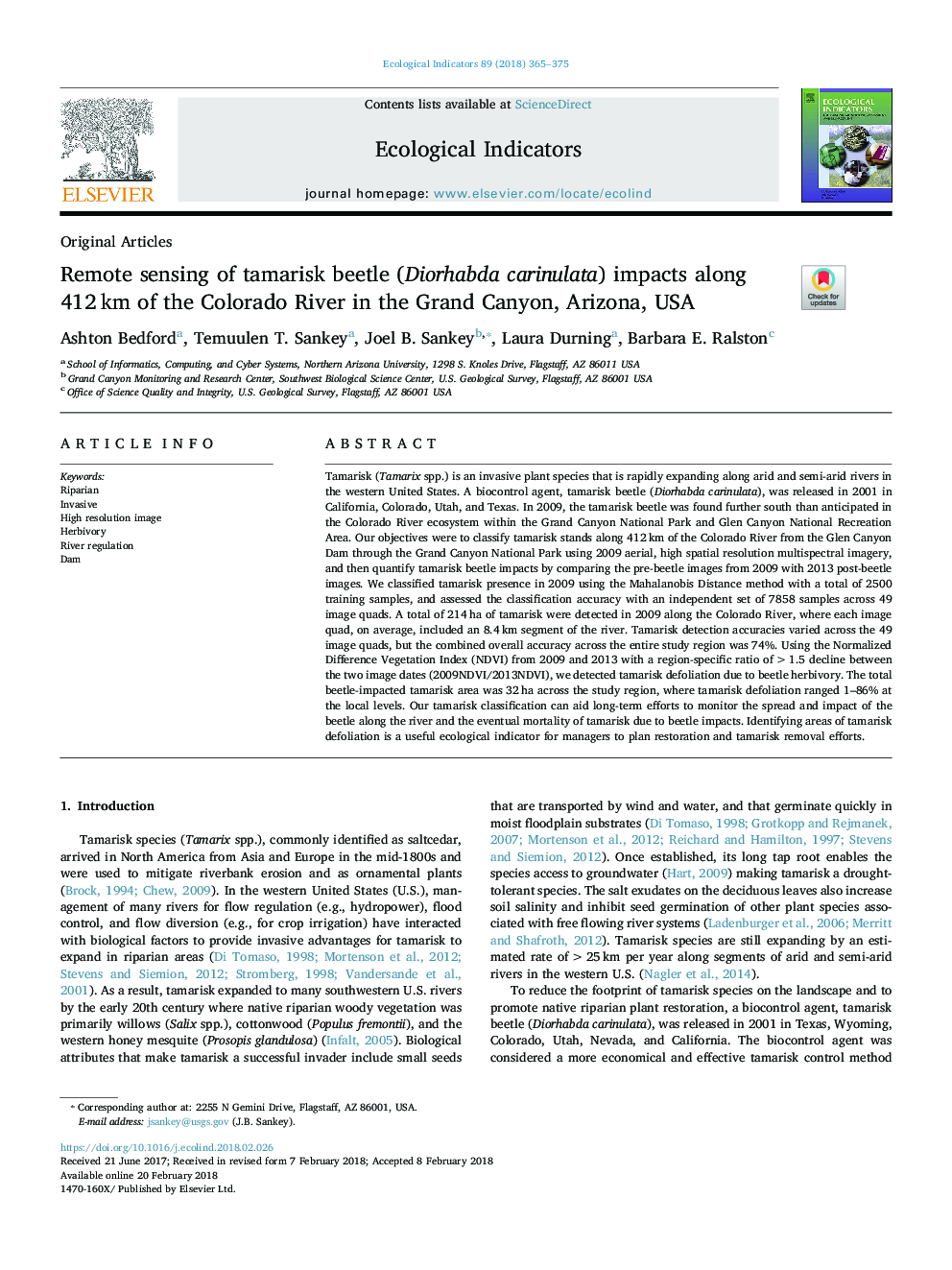| کد مقاله | کد نشریه | سال انتشار | مقاله انگلیسی | نسخه تمام متن |
|---|---|---|---|---|
| 8845477 | 1617113 | 2018 | 11 صفحه PDF | دانلود رایگان |
عنوان انگلیسی مقاله ISI
Remote sensing of tamarisk beetle (Diorhabda carinulata) impacts along 412â¯km of the Colorado River in the Grand Canyon, Arizona, USA
دانلود مقاله + سفارش ترجمه
دانلود مقاله ISI انگلیسی
رایگان برای ایرانیان
کلمات کلیدی
موضوعات مرتبط
علوم زیستی و بیوفناوری
علوم کشاورزی و بیولوژیک
بوم شناسی، تکامل، رفتار و سامانه شناسی
پیش نمایش صفحه اول مقاله

چکیده انگلیسی
Tamarisk (Tamarix spp.) is an invasive plant species that is rapidly expanding along arid and semi-arid rivers in the western United States. A biocontrol agent, tamarisk beetle (Diorhabda carinulata), was released in 2001 in California, Colorado, Utah, and Texas. In 2009, the tamarisk beetle was found further south than anticipated in the Colorado River ecosystem within the Grand Canyon National Park and Glen Canyon National Recreation Area. Our objectives were to classify tamarisk stands along 412â¯km of the Colorado River from the Glen Canyon Dam through the Grand Canyon National Park using 2009 aerial, high spatial resolution multispectral imagery, and then quantify tamarisk beetle impacts by comparing the pre-beetle images from 2009 with 2013 post-beetle images. We classified tamarisk presence in 2009 using the Mahalanobis Distance method with a total of 2500 training samples, and assessed the classification accuracy with an independent set of 7858 samples across 49 image quads. A total of 214â¯ha of tamarisk were detected in 2009 along the Colorado River, where each image quad, on average, included an 8.4â¯km segment of the river. Tamarisk detection accuracies varied across the 49 image quads, but the combined overall accuracy across the entire study region was 74%. Using the Normalized Difference Vegetation Index (NDVI) from 2009 and 2013 with a region-specific ratio of >1.5 decline between the two image dates (2009NDVI/2013NDVI), we detected tamarisk defoliation due to beetle herbivory. The total beetle-impacted tamarisk area was 32â¯ha across the study region, where tamarisk defoliation ranged 1-86% at the local levels. Our tamarisk classification can aid long-term efforts to monitor the spread and impact of the beetle along the river and the eventual mortality of tamarisk due to beetle impacts. Identifying areas of tamarisk defoliation is a useful ecological indicator for managers to plan restoration and tamarisk removal efforts.
ناشر
Database: Elsevier - ScienceDirect (ساینس دایرکت)
Journal: Ecological Indicators - Volume 89, June 2018, Pages 365-375
Journal: Ecological Indicators - Volume 89, June 2018, Pages 365-375
نویسندگان
Ashton Bedford, Temuulen T. Sankey, Joel B. Sankey, Laura Durning, Barbara E. Ralston,